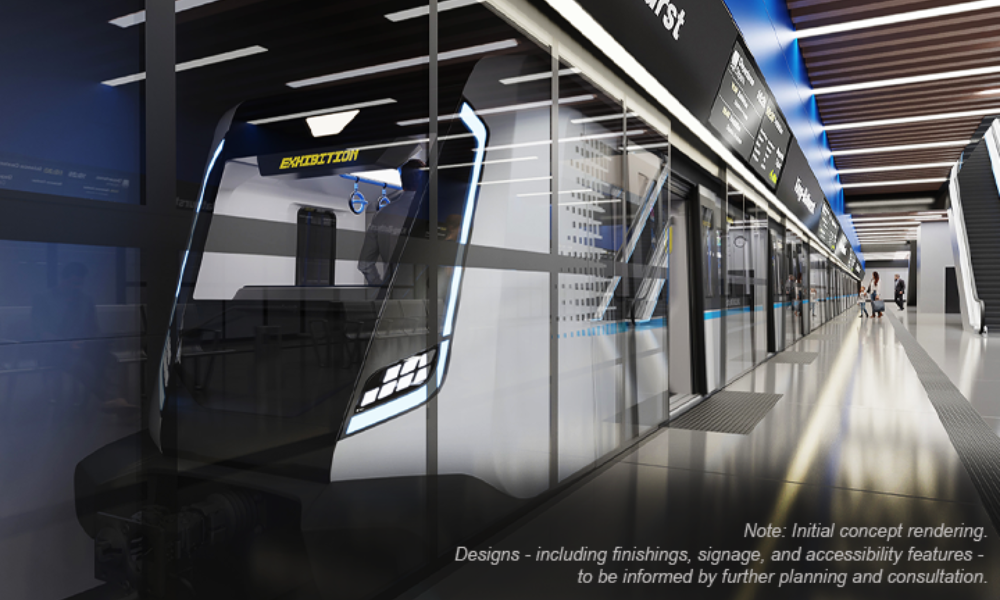Connected vests and sensors being used in construction of 15.6-kilometre rapid transit line in Toronto

Safety solutions from Europe are being imported into Canada through the transference of knowledge and technology on a transit project in Toronto. And when it comes to safety in the North American rail system “there's a lot of room for further improvement”, according to Alejo Bolgiani, Canada managing director for NGE Contracting.
NGE is France’s 4th largest civil engineering and construction firm, and it recently completed a Crossrail project in the United Kingdom. Now it is part of a consortium working on The Rolling Stock, Systems, Operations and Maintenance project. It is one of many contracts that will deliver the Ontario Line, which is a 15.6-kilometre stand-alone rapid transit line connecting the Ontario Science Centre to Exhibition Place.
Bolgiani says Canada is going to benefit from the safety practices they have fine tuned in Europe. “There are some techniques and some innovations we are very much looking forward to bringing into the market.”
Subscribe to the free Canadian Occupational Safety newsletter
Connected technology
NGE is part of a consortium called Connect6ix, which is responsible for the RSSOM, and it all falls under the purview of Infrastructure Ontario and Metrolinx. The current CEO of Metrolinx, Phil Verster is somewhat of an import himself, having cut his rail chops in the UK, which is also his home country.
Bolgiani says they used connected technology solutions to improve worker safety while working on the Crossrail project in the UK. “That was a very challenging scheme,” explains Bolgiani, “and we successfully completed the project without any fatal accidents or incidents.”
Workers used vibrating vests on that project and will now be utilizing the connected technology solution as they build tunnels for the RSSOM.
Developed internally by NGE, the vest is worn by operators of heavy machinery and other workers who need to be around those machines. When a worker enters a blind spot, the operator’s vest will vibrate, alerting them to the presence of an unseen co-worker.
Machines are also equipped with sensors to detect the presence of humans wearing the vests. But similar sensors can also detect areas to avoid. Bolgiani describes it as “software that is embedded into machinery,” and it can prevent the machine from making specific turns or movements that will lead it into an unsafe zone.
“It is not a very complex or sophisticated solution, it is something that it is easy to implement, but it could help avoid a lot of accidents,” professes Bolgiani, “there's a lot of situations where maybe they are not aware or they are not able to hear the machinery.”
Culture of understanding
The other safety component part of the construction on the RSSOM project, according to Bolgiani, is the creation of a safety culture in which everyone understands the ‘how’ and the ‘why’ of the hazard control methods being used.
“These are the type of solutions we discuss in the safety meetings to explain to workers how these machines work, and why this is useful and important for them.”
Bolgiani says it doesn’t matter if the subjects are basic or complex, “but the important thing is that everybody understands the importance of safety, and that putting safety first is not only a matter of keeping the people safe, but also a matter of being efficient in our work, and making the company and the whole team efficient.”
Efficiency matters on projects involving several other companies, as well as subcontractors, but Bolgiani says you can’t be efficient while being unsafe. NGE will need to hire local subcontractors for various jobs, and Bolgiani says they will be tested on their safety systems and culture.
“Safety criteria is embedded in our procurement process as well. We do a safety rating of all the companies we work with… and of course, any company that does not achieve these certain safety standards, we simply do not consider them for work.”
When complete, the RSSOM will help connect the people of Toronto, and provide relief to the TTC. But it will be very different from other transit systems in the city because it will be driverless. And that’s a whole other safety discussion.





